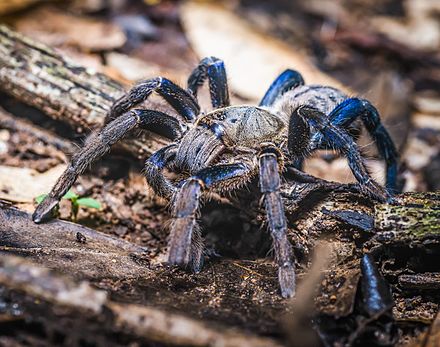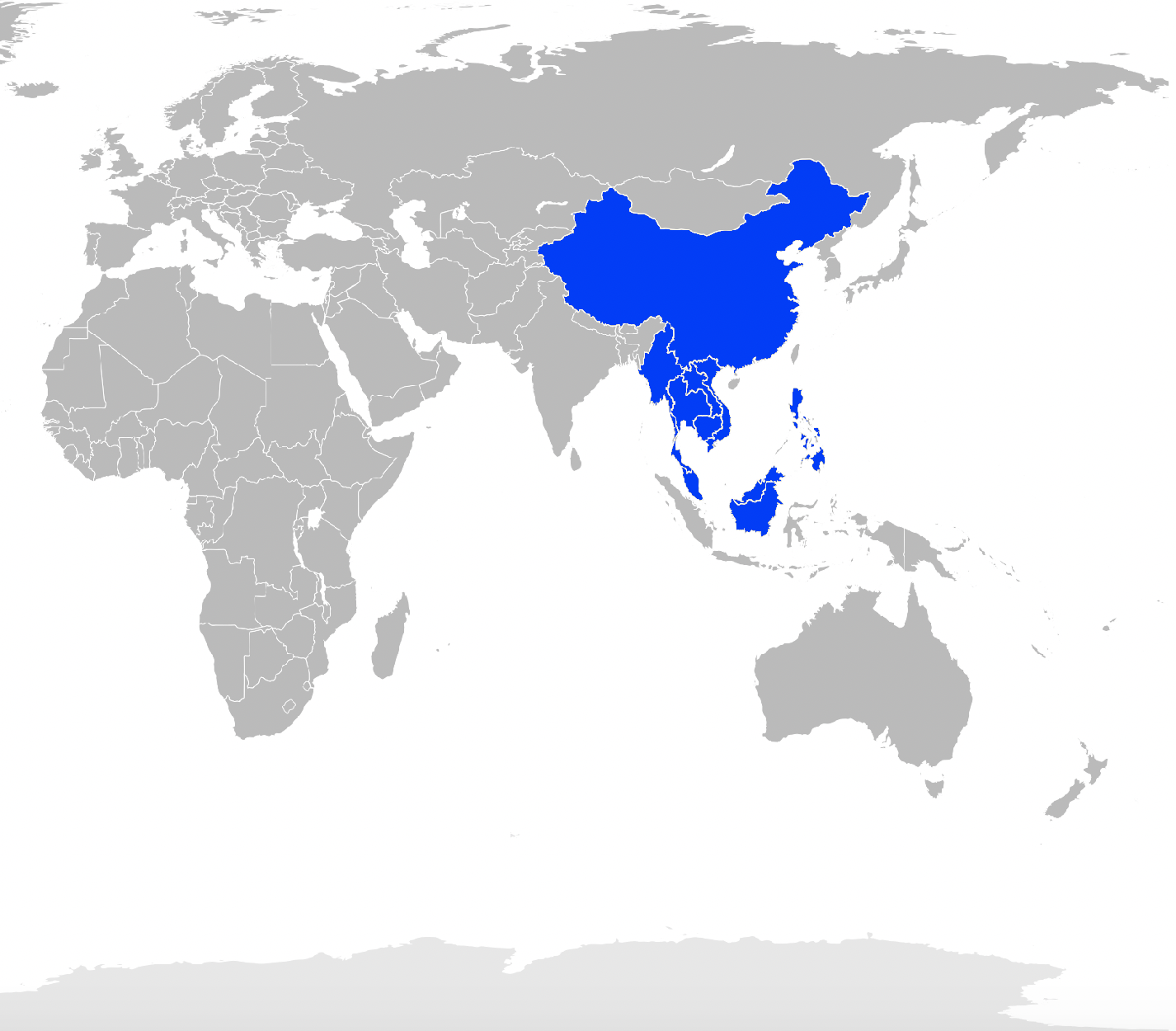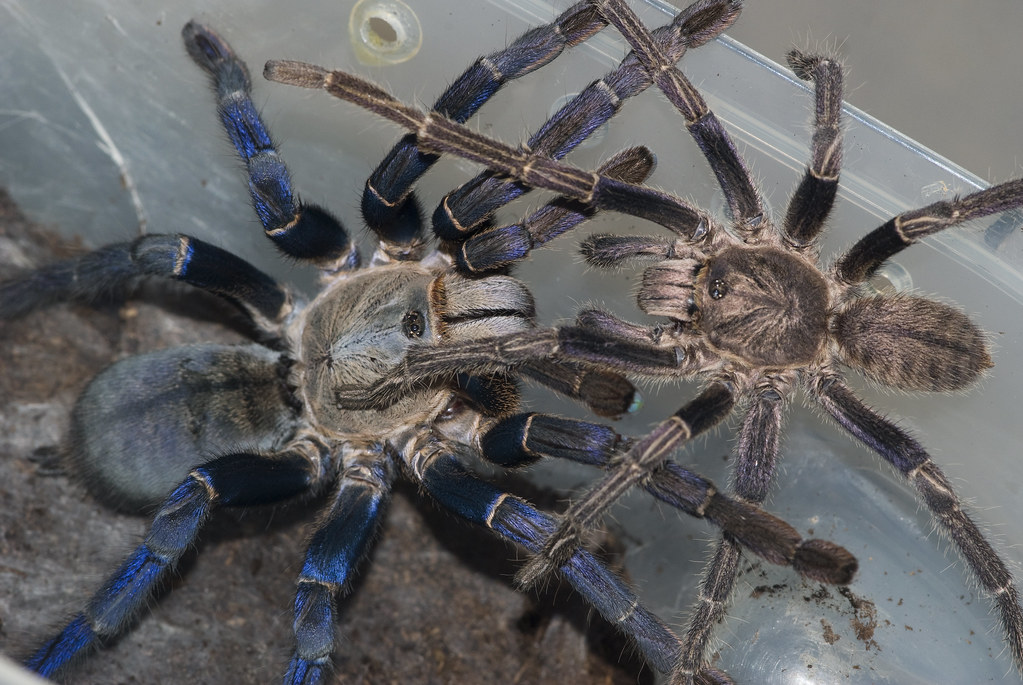Cobalt Blue Tarantula

COBALT BLUE TARANTULA:
KPCOFGS:
Kingdom: Animalia
Phylum: Arthropoda
Class: Chelicerata
Order: Arachnida
Family: Theraphosidae
Genus: Cyriopagopus
Species: Cyriopagopus lividus
Nº of Species:
Up to March 2020, nine species from the genus Cyriopagopus have been cataloged:
- Cyriopagopus albostriatus
- Cyriopagopus doriae
- Cyriopagopus hainanus
- Cyriopagopus lividus
- Cyriopagopus longipes
- Cyriopagopus minax
- Cyriopagopus paganus
- Cyriopagopus schmidti
- Cyriopagopus vonwirthi
SIZE:
This tarantula is considered a medium-sized spider (inside its genus).
- It has a leg span (length) is about 13 cm (5 inch).
- The body length of an adult is about 6 cm (2.5 inch).
LIFE SPAN & REPRODUCTION INFO:
Males from this specie can live up to 10 - 12 years, while females can live for 24 years!!
- A male sample will approach a female's burrow and carry a "tapping ritual" while "vibrating his body", if the female is receptive, it will exit its burrow to "invite" the male to mate.
- On the very last stage of molt, males develop a palpal bulb on the pedipalps (genital bulbs) and tibial apophyses (or mating hooks).
- Although it does not happen often, after mating, the female may hunt the male and feed on him. This is very common on various insects (like Black widow (on this website) or like the praying mantis). This happens as the female is usually bigger than the male and therefore has more strength and more venom.
EGG to ADULT:
- A Cobalt Blue Tarantula can lay up to 1000 eggs which will be later enclosed by an egg sac made with silk. This eggs are laid inside the spider's own burrow and can take up to 60 days to hatch.
- When they become adults, there are arising characteristics that physically differentiate males from females.
- One is that on the very last stage of molt (they molt their exoskeleton), males achieve sexual dimorphism (condition where two sexes of the same specie exhibit different characteristics beyond the differences in their sexual organs) which in this case is presented in a light bronze coloration. Another difference is that females grow bigger than males and are iridescent blue.
Nest INFO:
Since this spider is a tarantula, it does not produce spiderwebs, but instead digs it's own burrow, where it will spend much of its live and will lay the sacs with eggs. Cobalt Blue Tarantulas will rarely exit their "nest" if it is not in search for food.
When it hunts, this spider will hunt for a small prey, such as cockroaches, small mice, insects, small reptiles and amphibians. This should be small enough so it fits inside the tarantula's burrow.
BITE & DEFENSE MECHANISMS:
Since this spider is from the old world (old world refers to Asia, Europe, Africa and Australia), it lacks urticating hairs, which makes biting their only defense mechanism they can rely on. This makes this specie of tarantula more likely to attack when disturbed, as they have less means to defend themselves, which is the same reason why their venom is usually more potent than other tarantulas and faster.
About the venom on its bite, it is not usually dangerous to humans and fatalities have not been registered yet (13 June 2020, 23:39). The venom from C. hainanus produces hainantoxins and C. schmidti, huwentoxins.
- Hainantoxins specifically inhibit tetrodotoxin-sensitive Voltage-gated sodium channels (are membrane proteins that allow for electrical signaling in all types of excitable cells), thereby causing blockage of neuromuscular transmission and paralysis.
- In the case of Huwentoxins, these target Voltage-gated calcium channels and Voltage-gated sodium channels in order to produce a similar effect to Hainantoxins (paralyze prey).
- Moreover, tarantulas are widely known by its huge fangs, which's wound may cause a bacterial infection if not healed well.
INTERESTING FACTS:
- This tarantula is scientifically called Cyriopagopus lividus, although its former name is Haplopelma lividum.
- Tarantulas are usually prey of Tarantula Hawks, a type of wasp that hunts for them with its powerful sting. After hunting the tarantula, this will lay an egg on top of it and will enclose the tarantula on its own burrow so that when the larvae hatches it will feed on the tarantula (still alive so it does not rot while the egg hatches).
LOCATION MAP:
Cobalt Blue Tarantulas inhabit in tropical rainforests in the Southeast of Asia.
The countries below include: Laos, Cambodia, Malaysia, Vietnam, Thailand and Myanmar, etc.

PHOTO:
In this image below there are two Cobalt Blue Tarantulas mating. We can clearly see that these are fully developed tarantulas because of various factors. One is that on the very last stage of molt (they molt their exoskeleton), males achieve sexual dimorphism (condition where two sexes of the same specie exhibit different characteristics beyond the differences in their sexual organs) which in this case is presented in a light bronze coloration. Another difference is that females grow bigger than males and are iridescent blue.

(For more information about the websites consulted in this article, see the Bibliography at the bottom of the website.)
